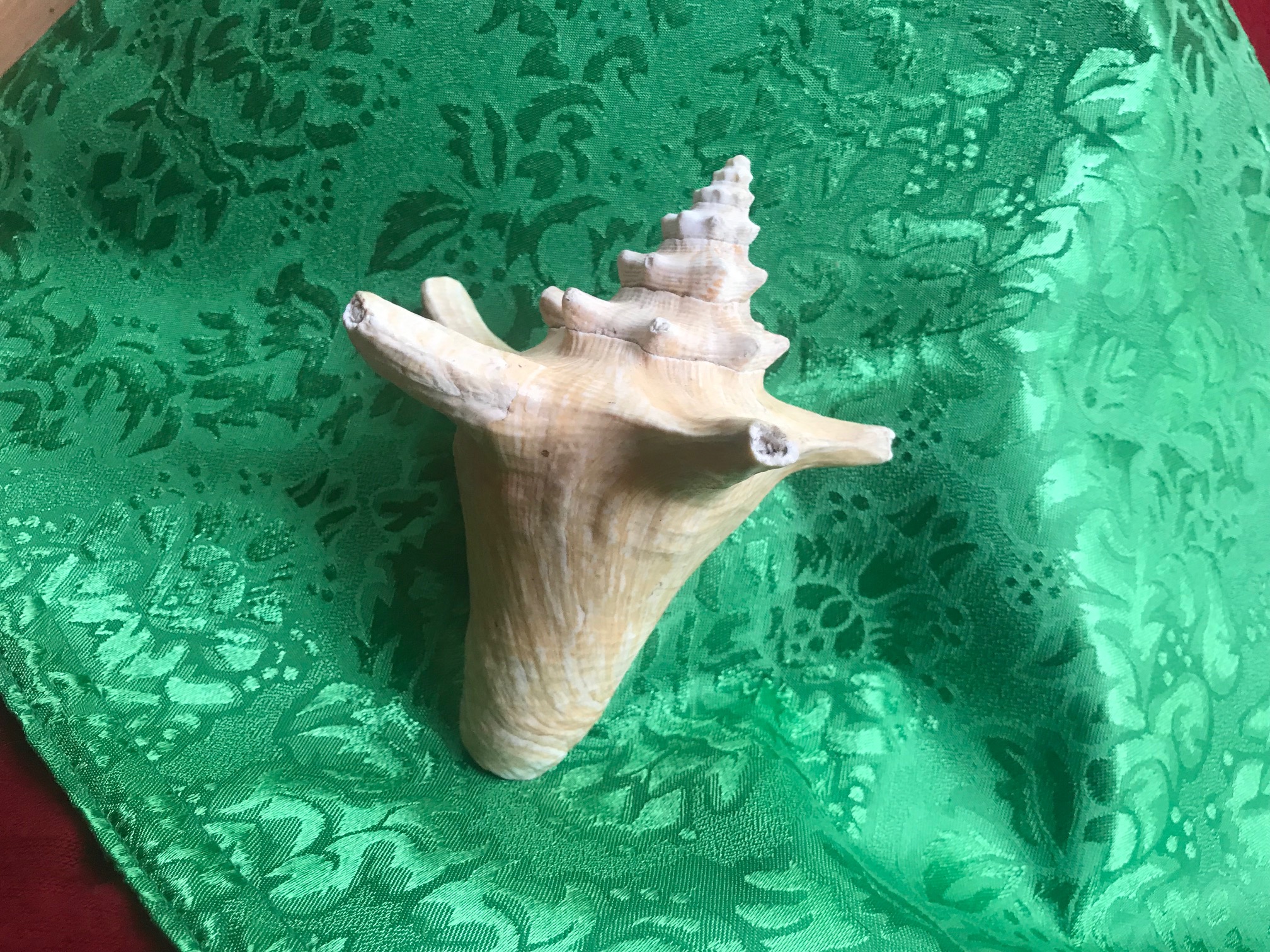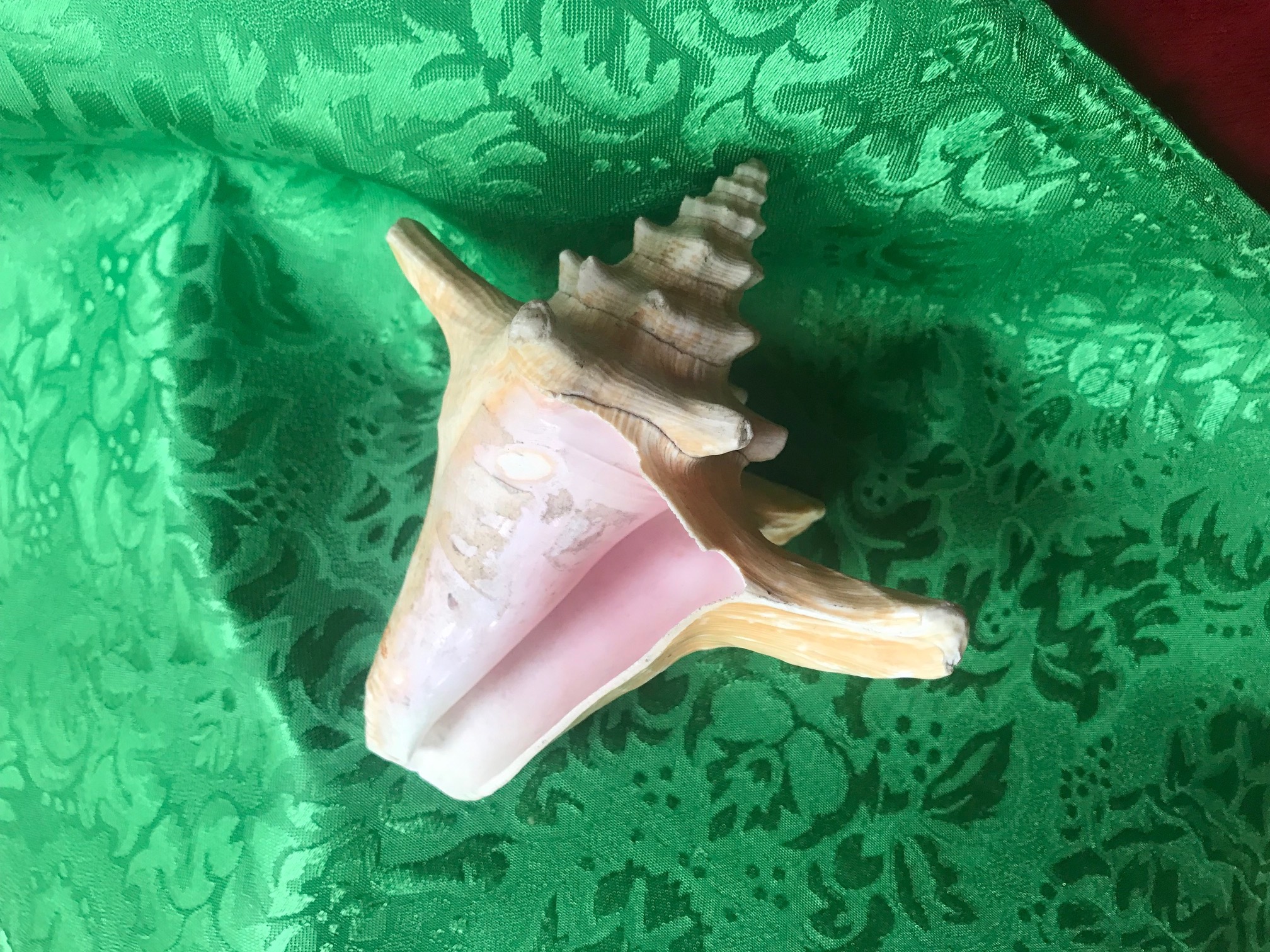#AskTamara: Do natural shells have Lead? Are they safe for kids to play with (as far as being non-toxic)?

I get these questions a lot!
- “Do sea shells have Lead?”
- “What about Cadmium and Mercury?”
- “Are they safe for my kids to play with?”
My Answer
I have tested quite a few shells (of different sizes, from different animals and from different parts of the world) and never found one to have XRF detectable levels of heavy metals. This does not mean that it is not theoretically possible for sea shells to have unsafe levels of heavy metals, it is – but I have not found this to be a problem when looking at intact shells being used as a play thing for young children. In fact, I love the idea of children playing with natural items like shells, rocks and sticks – and I always encourage that type of imaginative and creative play.
To see the exact XRF test results for the shell pictured in this post, please scroll down. I am posting several different posts with XRF test results for shells, however other than the XRF readings each post otherwise has the same text.
While the shell pictured is positive for some metals at trace levels, it is negative for Lead, Mercury, Cadmium, Antimony and Arsenic – within the limits of detection of the XRF instrument, when tested for a minimum of 60 seconds. Test results are science-based, and replicable; each test was repeated multiple times to confirm the results.
The Exception
While overall I have no concern for toxicants found in seashells (especially in the context of children playing with them), I do want to clearly state the following the exception: If shells are from bottom-feeding filter animals (which most shells are) then they likely have at least some heavy metals (even if it is below the level of detection for any XRF instrument.)
As a result, there are documented cases (including one that has been widely-circulated in social media over the past few years) in which an artist or craftsman grinds or pulverizes shells as part of their work and has been poisoned as a result of the cumulative exposure to all that dust. As with any grinding and sanding or drilling (no matter what the item is that is being worked on – wood, stone, shell, metal, etc.), proper masks and protections should be worn — not only because your lungs are easily damaged from any airborne particulates, but also to protect your health in the off-chance that the items you are working with may contain some amount (trace or otherwise) of heavy metals – including Lead. Even trace levels can be very toxic when an item is sanded or ground [or even cut, drilled or otherwise machined], producing micro-dust that can be inhaled or ingested.
XRF Test Results for the Shell Pictured Here
Test ONE
Test done on the outside of the shell (peach colored area):
- Lead (Pb): Non-Detect (negative) – (and at least below 17 ppm)
- Cadmium (Cd): Non-Detect (negative) – (and at least below 15 ppm)
- Mercury (Hg): Non-Detect (negative) – (and at least below 44 ppm)
- Antimony (Sb): Non-Detect (negative) – (and at least below 39 ppm)
Metals detected on the above test:
- Titanium (Ti): 156 +/- 64 ppm
- Iron (Fe): 511 +/- 172 ppm
Test TWO
Test done on the inside of the shell (pink colored area):
- Lead (Pb): Non-Detect (negative) – (and at least below 17 ppm)
- Cadmium (Cd): Non-Detect (negative) – (and at least below 17 ppm)
- Mercury (Hg): Non-Detect (negative) – (and at least below 46 ppm)
- Antimony (Sb): Non-Detect (negative) – (and at least below 41 ppm)
Metals detected on the above test:
- Titanium (Ti): 150 +/- 62 ppm
- Iron (Fe): 459 +/- 174 ppm
- Vanadium (V): 100 +/- 47 ppm
As always, thank you for reading and for sharing my posts.
Please let me know if you have any questions.
To see more examples of seashells I have tested, click here.
Tamara Rubin
#LeadSafeMama
Never Miss an Important Article Again!
Join our Email List



